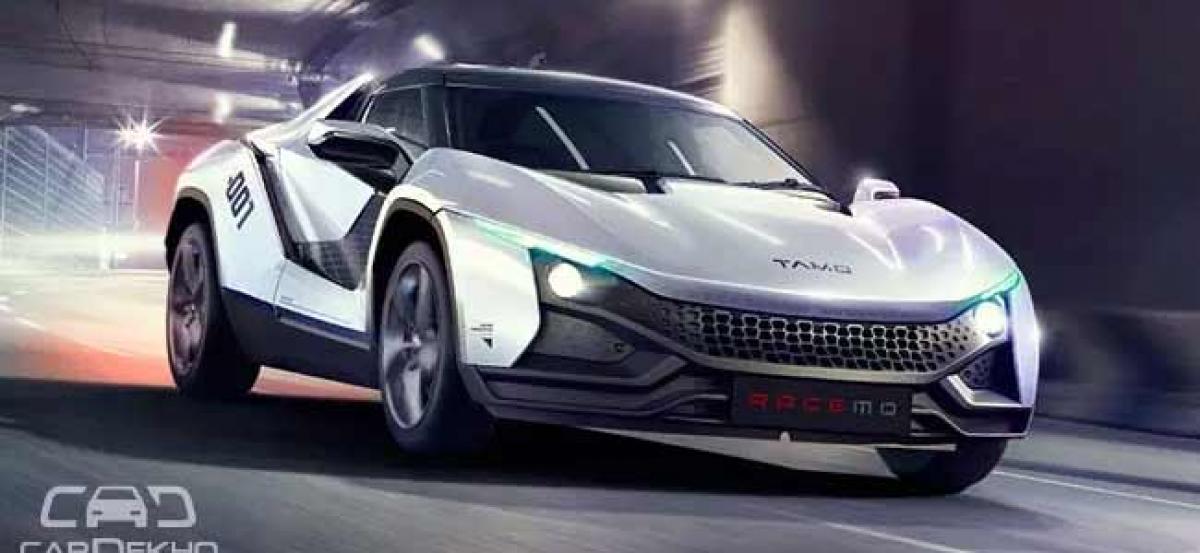Live
- Honda Motorcycle and Scooter India conducts Road Safety Awareness Campaign in Siddipet, Telangana
- Natural Moisturisers You Can Find in Your Kitchen for Dry Skin in Winters
- National Energy Conservation Day 2024: Importance, Date, and Ways to Save Energy
- In 2024, 353 girls enrolled in 33 erstwhile pattern Sainik Schools
- Venkatesh looks as stylish cop in ‘Sankranthiki Vasthunnam’ new song promo
- ‘Drinker Sai’ comes with a catchy song ‘Drinksu Drinksu Drinksu’
- SDT unleashes intensity in ‘Sambarala Yetigattu’ teaser
- Court Adjourns Quash Petition Hearing for Allu Arjun to 21st of December
- Youthful love story ‘Varadhi’ clears censor; set to release soon
- ‘Mardaani 3’ announced with Rani Mukerji’s return as Shivani Shivaji Roy
Just In
Impact 2.0 - What To Expect From Tata Motors’ New Design Language


Two years ago, Tata Motors announced a new design language called Impact Design. The idea behind this design theme was to make a lasting impression on the onlookers. Tata successfully managed to do that with striking products like the Tiago, Tigor, Hexa,
The new design language will debut with upcoming Tata products based on two new platforms
Two years ago, Tata Motors announced a new design language called Impact Design. The idea behind this design theme was to make a lasting impression on the onlookers. Tata successfully managed to do that with striking products like the Tiago, Tigor, Hexa, and the Nexon. The carmaker has now announced the second iteration of its Impact Design philosophy -- Impact 2.0 -- that new-age Tata products will adorn. The Indian carmaker will showcase the first products based on the new design language at the upcoming Auto Expo 2018. While that isn’t too far off, we got in touch with the Tata’s head of design, Pratap Bose, to know more about Impact 2.0, which is an evolution of the original Impact Design theme aimed to add a touch of maturity to product designs.
Getting the basics right
Tata’s upcoming products with the new design language will be based on two new platforms - the modular Advanced Modular Platform (AMP) architecture and the Discovery Sport platform a.k.a the Q platform. Bose revealed that the design team was involved from the very beginning of the layout of the AMP architecture allowing them to design suitably proportioned cars. Talking about the same, Bose said, “The design team actually established the entire geometry or proportions of AMP. Certainly, it was fundamental that we got involved from day one to set up the overhangs, to set up the cabin proportion, the body ratio, all these things we knew had to be featured because the platform lasts 15-20 years. So you should never be in a position that you’re getting vague in terms of platform proportion. The style and the design language can change but the basic architecture is fundamental.”
Impact 2.0 - evolution, not revolution

Bose also told us that the Impact 2.0 will have the three key design elements of Impact 1.0, namely the Humanity line, the Slingshot line and the Diamond DLO. However, these design elements have evolved in the new design theme. Explaining the differences that the naked eye will be able to spot in Impact 2.0, he added, “The humanity line is much more three dimensional, you’ll see that in the cars which will come out. The slingshot line is much sharper, much more well defined but recognisable. While we’re referencing some of these elements, you’ll see how modern, updated and advanced they look. And slowly you’ll also be able to read the evolution from the original Indica to where we will be going.”
Keeping the design DNA intact

But why just an evolution, when Tata can do something as revolutionary as the Tamo? Bose, who believes that any carmaker’s design team maintains its family heritage, said, “Look at any company in the world which has seven, eight or nine generations of products. A couple of generations may have not have been as well accepted but they didn’t give up. So you don’t change the design DNA so easily. You should have a very compelling reason. The way our volumes are growing and things are moving, we’re doing something right here.” So, clearly, there is going to be a connect between Tata’s upcoming products and the existing ones in terms of design.
Truly Indian on the inside
While on the outside, the design of upcoming Tata cars will evolve, the details on the inside will be influenced by Indian architecture. There is a clear indication that interior design will also evolve. Giving us a hint about what to expect from upcoming Tata products, Bose said, “In the Nexon, you saw we separated the screen from the dashboard, it is floating. And this we will carry on in Impact 2.0. That gives us a chance to even make it bigger, wider.”
Design beyond borders
Talking about how Tata will be able to configure their upcoming products for multiple markets, Bose said, “With these platforms and these products, if we want to actually go beyond India in to any other global market, we’ll be absolutely spot on and competitive with products available there. Why I am saying this is important. You have to protect, what we say engineering protection. For example, in India if we launch (a product with) 16-inch or 17-inch wheels, in some other market we can launch (it) with 18-inch. So, that ability must be there. That’s what we’re talking about (while) defining the vehicle architecture.”
The carmaker expects its evolved design language to make an even bigger impact. The first of the cars to sport the new design theme at the upcoming Auto Expo 2018 could be a hatchback in the premium segment, rivalling the likes of the Maruti Suzuki Baleno and the Hyundai Elite i20. Check out Tata Motors’ expected lineup for the auto expo.
Source: cardekho.com

© 2024 Hyderabad Media House Limited/The Hans India. All rights reserved. Powered by hocalwire.com






